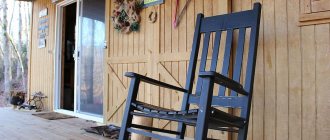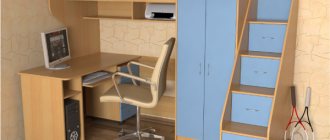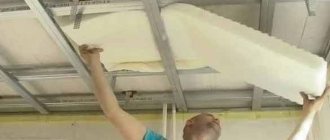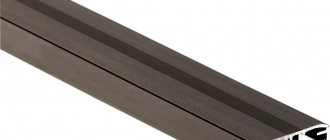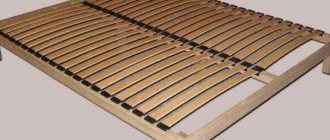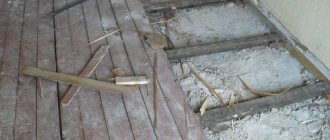The main advantages of attic insulation
Layers of Insulation Before Laying the Floor
The benefits of properly insulating your loft are well known. First of all, it is about maintaining heat in the house. There are also other factors to consider, such as the health of you and your loved ones.
Proper attic insulation can bring many benefits to you, your family and your home.
Save money on your electricity and gas bills
Better attic insulation saves you money. After all, a poorly insulated house can lose a quarter of its heat through the roof.
The simple solution is to install appropriate insulation
If this insulation is the recommended thickness of 270mm, you could save up to 25% on your electricity or gas bills.
Good insulation increases the value of your home
Improving the energy efficiency of your home makes it more valuable. According to statistics from completed home purchase and sale transactions, real estate with energy-saving technologies was sold at an average of 14% higher price.
Properly installed insulation can improve your health
A damp problem can affect your health or the health of other family members.
Poorly insulated attics and those where flooring is installed incorrectly can cause damp and condensation. This can lead to mold which, along with dampness, means you are more likely to have respiratory problems, respiratory infections, allergies or asthma.
Problems often arise when insulation is compressed by improperly installed attic flooring. This will stop the air flow between the floor and the insulation.
It is important to lay a solid base on top of the insulation
This can lead to problems such as:
- The insulation loses its thermal efficiency.
- This causes cracks in the ceiling.
- Water vapor generated in the home rises until it hits the cool surface of the lower attic floor.
- This may cause condensation to form inside the insulation.
- The condensation then begins to seep down, creating dampness and affecting the ceilings.
If you want to use your attic space for storage, adequate air flow is essential. This should be considered an absolute necessity.
Helps the environment
A properly insulated private home can reduce CO2 emissions by up to 80kg per year. Reducing CO2 emissions means you are doing your part to reduce global carbon emissions. And therefore the consequences of climate change.
Reduced wear and tear on your boiler
- If your boiler has to produce more heat than it needs, consider it won't last as long as it could.
- Having proper attic insulation means that you will create a stable living environment inside your home.
- This will help extend the life of your boiler, which is another way to save money!
Materials for insulating an attic in a wooden house
In most cases, in houses made of this structural material, only the ceiling is subject to insulation. The thermal insulation layer is installed from the attic side. However, if the attic space is planned to be used as a living room, it would be correct to insulate the roof of the house itself.
Mineral wool, glass wool
Mineral wool, glass wool - the materials are environmentally friendly products, fire-resistant, lightweight, and easy to install. However, it has high rates of vapor permeability and water absorption, and therefore requires waterproofing or a vapor barrier.
Polyurethane foam
Technology of insulating the attic of a house with polyurethane foam.
Polyurethane foam - obtained from gas-filled plastics, sold in the form of pressure cylinders, applied by conventional spraying to the desired surface. The advantage is that it forms a seamless coating, which prevents the formation of cold bridges, has a high degree of adhesion to the wooden surface, and therefore does not require additional fasteners. It is lightweight, therefore it does not exert additional pressure on the ceiling, has high heat and sound insulation, and does not absorb moisture.
Polyurethane foam does not rot, withstands aggressive environments, and microorganisms do not develop on its surface. It is characterized by strength and rigidity, it does not absorb water and does not allow steam to pass through it. The disadvantage is the high price compared to similar products.
Expanded polystyrene
Expanded polystyrene - it is mistakenly called polystyrene foam. Expanded polystyrene, unlike polystyrene foam, undergoes several additional processing stages, which is why it is characterized by increased strength. Properly organized on its basis, the insulating layer in the attic of a wooden house is vapor-tight. Expanded polystyrene is moisture resistant, but does not tolerate the action of organic solvents. It helps the fire spread.
Before you start
Before you start insulating your attic, there are a few things to consider. These things will affect the work required to perform the job at a professional level.
Existing insulation
Attic space with existing insulation
Does your attic look like this?
Most attics already have some kind of insulation. Although in most cases it is either poorly installed, or compressed, or has a thickness significantly lower than the recommended 270 mm. If any of this describes your isolation, you probably need to work to fix it.
Can't see the insulation because it's hidden under the sheathing? Here are some options:
- If you can tell that the height of this floor is greater than 270mm or more above the ceiling, you may already have the insulation installed correctly.
- You can lift one of the boards farthest from the hatch and inspect what is under it. Just be careful, there may be electrical cables or pipes under the boards.
- Once you have access to the insulation, you can check its thickness. You can also check to see if it has been crushed by any plantings.
- There must be a gap to allow air flow over the insulation. Without this clearance, you may experience condensation buildup and related problems.
Warm or cold attic
What you plan to store in your attic will determine whether you will find it warm or cold. You will need a warm attic if you plan to use it as a hobby room.
Or if you need to store climate sensitive materials. Otherwise, a cold attic will suffice, but let's look at the benefits and work involved with both.
Cold attics
The advantage of cold attics is that they are cheap and relatively easy to install. This is because the only insulation needed is between and on top of the floor joists, preventing heat from entering the attic.
In a cold attic, only the floor is insulated
This type of insulation is subject to temperature fluctuations and condensation. The term “cold” attic can be misleading as it can get very hot in the summer!
Warm attics
To create a warm attic, it is necessary to insulate the floor and the lower part of the roof. This will allow heat to penetrate inside and regulate its temperature. But this heat cannot escape through the roof.
In warm attics there is no problem when it gets too hot in the summer or very cold in the winter. Consequently, a much wider range of uses is possible.
The underside of the roof can also be boarded and decorated, which can greatly transform your attic. The downside is that creating a warm attic is more difficult without professional help. Therefore, it is more expensive.
However, there is one important advantage to creating a warm attic. This will easily increase the value of your property more than the cost of the work. It also gives you many more possibilities and options for using the extra space created.
This is of course not on the same level as a full loft conversion due to the weight limitations of conventional loft flooring.
What types of insulation are there?
Insulation may include only thermal insulation of the ceiling (this will make the heating system 20% more efficient) or insulation of the roof vault and floor in the attic, followed by the arrangement of the attic.
Classification
All insulation materials are divided into 3 groups by type:
- Bulk insulation
: straw, reeds, sawdust, firewood (flax), buckwheat, foam granules, ecowool, expanded clay. - In the form of slabs or mats
- they are made from polystyrene foam, penoplex, polyurethane foam, penoizol, foam concrete, mineral wool, straw, reeds and algae. - Rolled
- made from flax, seaweed, stone wool and glass wool.
Bulk and rolled materials are conventionally considered “light”. They can be used on wooden beams. Heavy slabs or mats are what can be used to insulate an attic ceiling made of concrete slabs.
It is also important for the ceiling that the insulation on the wooden beams is light and breathable. There is no such requirement for concrete slabs.
Pros and cons of different materials
Sawdust
– this is the most accessible material. Before you insulate a cold attic, you need to take into account a number of its significant disadvantages. Rodents like wood shavings; they can make their nests in it. Due to its high flammability, it should not be used near chimneys or other heat sources. This applies to straw, reeds, and buckwheat.
Linen
(or fire) is not liked by insects and rodents, but it also easily catches fire and caking. The caked layer must be filled with additional insulation.
Expanded clay
refers to bulk insulation, but it is quite heavy, so it can only be used in attics with concrete floors. You can make a full-fledged floor on top if your plans include arranging an attic.
Most materials have low heat and sound insulation, so for a high-quality effect they need to be laid in a thick layer. For example, depending on the climate, the straw layer can be from 20 to 45 cm. Expanded polystyrene
It is recommended to lay it 12-14 cm thick.
All natural materials
, as well as different types of wool, lose their insulating properties when wet. Therefore, before insulating an attic in a private house with them, you need to carefully consider the waterproofing system of the entire structure. Otherwise, moisture will cause dampness, fungus and an unpleasant odor.
All materials for insulating ceilings under normal operating conditions do not emit any harmful substances, but in the event of abnormally high temperatures or during a fire, polystyrene foam, cotton wool and polyurethane foam can cause poisoning with toxic vapors and gases.
How attic insulation works
Simply put, attic insulation traps warm air inside your home and prevents it from rising through the roof. If installed correctly, it will still allow moisture to pass through and therefore prevent condensation.
In an uninsulated home, most of the heat you generate to keep you warm will escape through the walls, floors, doors and windows. And especially through the roof, through your attic. This causes you to generate more heat than you need, increasing both your energy bills and CO2 emissions.
Law of Diminishing Returns
Everyone knows that insulation will help keep your home warm in the winter, but it can also keep your home cool in the summer. How much insulation you need will depend on a number of factors. But the level of thermal efficiency is simply a factor of the depth of insulation installed.
The current recommendation is 270 mm, which provides a U-value (watt/meter2/degree Celsius) of 0.15. 200mm insulation provides a U-value of 0.18 and 100mm provides 0.28.
This means that installing 100mm of insulation in a house without insulation will increase efficiency by 72%. The next 100 mm increases efficiency by another 10%. The difference between 200mm and 270mm is only about 15%.
Graph shows diminishing returns on additional attic insulation
How much attic insulation do I need?
To make the most of the benefits of attic insulation, you need to at least cover the entire floor with clearance around the edges for air flow.
To measure insulation, you can simply measure all the rooms directly underneath and add them together, taking into account the width of the walls. You don't have to be precise, and you should always underestimate so that you have extra insulation if necessary.
If you are building a warm loft you will need a lot more insulation to cover the underside of the roof along with the gable and walls.
Various types of attic insulation
There are many types of insulation materials available on the market. The main ones are listed below.
Roll insulation
Rolled Insulation
An attic that hasn't been touched in decades may have some insulation between the joists, albeit very little. This is the most common type of attic insulation, and not just because it's cheap.
Watch a short video about the production of roll insulation at Knauf factories:
Sheet insulation is usually made from stone, glass or mineral fiber and comes in rolls. It's very easy to install, especially between joists, which is all you'll need if the temperature of the attic itself doesn't need to be controlled.
This type of insulation is used for floor insulation, but is not suitable for roofing.
Roll insulation is only intended for flat, horizontal surfaces.
So if you plan to spend time in the attic or store temperature-sensitive items, you'll also need to insulate the underside of the roof.
Loose insulation
Loose-fill insulation
If you already have insulation between the joists but it needs to be filled in, you can use additional layers of insulation or use a loose-fill insulation. It consists of a loose and lightweight material that can be laid on top to achieve the desired depth.
- The big advantage of loose-fill insulation is that it is very cheap, especially if you use recycled materials - it could even be shredded newspaper.
- It is also made from other materials such as cork granules, cellulose fiber or mineral wool.
- In the past, loose-fill insulation was made from a dangerous material you've probably heard of called asbestos.
Bulk insulation can really only be used for replenishment. And not very effective if used as primary insulation.
Blown Fiber Insulation
Pictured - Applying Blown Fiber Insulation
If you need to insulate hard-to-reach nooks and crannies, blown fiber insulation is the ideal solution. These can be various types of bulk materials that are blown into the gaps by machine.
The cost of processing services is significant
However, this is only a partial solution and is not enough to insulate the entire attic, especially if it is drafty. It is also expensive because the equipment used is owned by construction companies, which means it will increase the cost of your renovation.
Sheet insulation
Sheet Insulation
If you want a temperature-controlled attic, you'll also need to insulate the underside of the roof. You can buy insulation sheets for this purpose.
Sheets can be made of various materials, natural or synthetic. The quality of insulation is usually excellent, and the boards can be decorated. This is the most expensive type of attic insulation and must be installed by a qualified professional.
This type of insulation requires professional installation.
Materials for insulating the attic
The problem of the need to insulate the attic is not new. People, wondering how to insulate an attic, sought to carry out similar work hundreds of years ago. The materials for carrying out such work were resins, deflated reeds, sawdust and fallen leaves. Over time, they were replaced with expanded clay, rags, glass wool and roofing felt.
Currently, there are many thermal insulation materials on the building materials market, varying in quality, structure and price, but they have several common positive characteristics:
- light weight, eliminating the possibility of overloading attic structures;
- environmental safety and complete harmlessness to people;
- convenience and ease of installation;
- fire safety.
It is necessary to consider the most popular building materials of this type, with the help of which the attic space can be insulated.
Expanded polystyrene
Technical characteristics of expanded polystyrene or polystyrene foam is produced in the form of rectangular or square slabs of various sizes. Do-it-yourself insulation of an attic in a private house using polystyrene foam or polystyrene foam is the choice of many people. The demand for this material is due to many factors:
- firstly, properly installed slabs do not deform during operation;
- secondly, polystyrene foam is very easy to adjust to the required dimensions;
- thirdly, the installation of this heat-insulating material is as simple as possible.
To insulate the roof of a wooden house from the inside, polystyrene foam and expanded polystyrene are most often used as insulation for the ceiling.
Polyurethane foam
This building insulation, thermal insulation and waterproofing material, created on the basis of plastic, can hardly be used to insulate the roof from the inside with your own hands. This is due to the simplicity of the work, and the lack of special equipment necessary for this. Polyurethane foam is applied by spraying.
In addition to the above positive characteristics, this insulation helps to strengthen all planes of the attic. In addition, it has the ability to fill any, even the smallest holes. Roof insulation with mineral wool can be done much cheaper than with polyurethane foam, but its positive performance characteristics more than offset the high price. For example, such polymer insulation can last 70 years.
Do-it-yourself chimney pipe insulation technology
Mineral wool
Often people thinking about how to insulate an attic choose mineral wool as a material for carrying out such work. This material is well known to many. It has several release forms:
- roll;
- plate;
- fine-grained bulk insulator.
For people wondering how to insulate a roof from the inside, mineral wool may be the best option, because this material is easy to install and can last for decades, provided that the waterproofing is properly installed. Despite the presence of a mass of modern polymer insulation materials on the modern market, mineral wool is still the most popular material used to insulate an attic space.
Expanded clay
This material has been tested by time. It is capable of performing its functions efficiently for centuries. It is not suitable for insulating the roof from the inside, but it can be the best choice for thermal insulation of the ceiling. In order for the thermal insulation layer of expanded clay to efficiently perform its functions, its thickness must be at least 15-20 centimeters.
Expanded clay served as insulation for the attic of a house 100, 200 or more years ago. The buildings of those times have long crumbled into dust, and expanded clay from them can be freely reused. It should also be mentioned that this material is absolutely immune to high temperatures. It does not ignite or disintegrate under their influence.
How much does it cost
The price of insulation varies. In Leroy Merlin, the cost of insulation varies depending on the region. Below are prices for insulation materials for Moscow and the region:
| Name of material | Price |
| Ursa insulation heat standard 100 mm 8 m² | 528 RUR/pack (66 RUR/m2) |
| Thermal insulating PIR board PirroUniversal 50x600x1200 mm | 485 RUR/pcs. (618 r/m2) |
| Insulation TechnoNIKOL GreenGuard Universal 50 mm 8 plates 600x1200 mm 5.76 m² | 598 RUR/piece (103 RUR/m2) |
Do-it-yourself attic insulation
Creating a warm attic is definitely not a DIY job. This is because there is work to be done on the roof itself, and damage to it can have dire consequences on the stability of your entire home.
However, it is possible. If you are planning to do any work in your attic, there are a few safety issues to consider before you begin.
- If you are working in an attic without a floor, crawl/tip boards must be installed to ensure safe movement. They can be temporarily fixed in place to eliminate the risk of creating traps or movement.
- Make sure your attic is well ventilated and free of condensation.
- Make sure the attic is well lit so you can see exactly what you are doing. Ideally, try using several LED lights in different locations - LEDs don't get hot and produce a powerful, bright white light.
- Wear a protective face mask to prevent inhaling dust particles.
- Crawling on your knees for any length of time can be quite debilitating, so you may also benefit from using knee pads.
- Finally, if your home was built before 2000, there may be asbestos-containing materials in your attic. If you suspect there is, read the next section very carefully.
Dangers of asbestos
Asbestos Fibers
As mentioned above, it is possible that there are asbestos-containing materials in your attic. Asbestos has been used for thousands of years due to its fantastic properties (durable, fire-resistant, acid-resistant, alkali-resistant, heat-resistant and non-conductive).
Its harmful qualities were discovered only relatively recently. Exposure can lead to a serious long-term lung disease called asbestosis or mesothelioma, which is a type of cancer that develops in the lining that lines the body's organs.
So how do I know if I have asbestos in my attic? If your house was built before 2000, then the likelihood of it being in the attic is high. After this date, it began to be used much less frequently.
You won't know you have asbestos in your attic (or anywhere else in your home) until a professional comes and checks. Asbestos fibers are invisible to the naked eye and have no taste or odor, so it is difficult to tell for sure just by looking at part of the house. For this reason, asbestos is known as the "hidden killer."
The only reliable way to know whether a product or material contains asbestos or not is to have a sample tested by an ISO 17025 accredited laboratory.
We carry out insulation of the attic with our own hands
If the height of the attic space does not allow you to eventually arrange a living or auxiliary space there, then it is enough to insulate only the ceiling. To do this, first of all, it is necessary to waterproof it, then lay the selected insulation between the floor beams, on top of which a vapor barrier film is laid overlapping.
The joints of the film are covered with adhesive tape or special glue. To lay mineral wool on a reinforced concrete floor, it is necessary to make a lathing, the pitch of which is equal to the width of the insulating material (roll or slab), and the thickness of the bars is equal to the thickness of the insulation.
In the attic room, in addition to the floor, it is necessary to insulate the roof from the inside. The work is carried out similarly to floor insulation.
Mineral wool insulation is laid between the rafters, a vapor barrier is installed on top, and then the sheathing is filled.
Moisture-resistant plasterboard, fiberboard sheets or lining are attached to the sheathing. An air gap remains between the insulation and the finishing of the walls.
If polystyrene foam or expanded polystyrene is used to insulate the roof, then an air gap is not required.
Before starting work, it is necessary to inspect all structures
. Often, replacement of any wooden elements is required. Next, you need to treat the wooden elements with an antiseptic. Carry out installation work on hidden electrical wiring.
In an unused attic, ventilation vents must be provided. They are usually done on the gables of the roof. In the attic roof, vents are also installed for free air circulation under the cladding - in the ridge and overhangs.
Modern roll insulation materials are often produced with a foil top layer, which serves as a vapor barrier. The slabs are laid in a foil layer inside the room and secured to each other with adhesive tape.
Insulating the attic is not a luxury, but a necessity, as it will subsequently save energy costs and the costs will more than pay off.
Useful video
An attic is an unheated room under the roof formed by roof slopes.
In a private house, to preserve heat, the attic is insulated along the ceiling. This allows you to efficiently use energy by heating only residential premises.
The insulation scheme depends on the material from which the interfloor covering of the upper floor is made. In low-rise construction these are wooden beams or reinforced concrete slabs.
What tools are needed for the job?
When working in a confined space, having a respirator is a recognized necessity.
Here are some tips on what tools you will need to insulate your attic:
- Garbage bags.
- Medical mask or respirator.
- Protective clothing.
- Roulette.
- Hand saw.
- Utility knife or scissors.
- Mobile desktop.
Work rules
Preliminary preparation
Before insulating the attic space of a house, we will familiarize ourselves with a number of rules that must be followed to achieve the best effect:
- If roll insulation is used, then care must be taken to ensure ventilation of the attic. If this is not done, then over time condensation will form on the internal surfaces, negatively affecting the quality of all wooden and other structural elements.
Attic insulation scheme
- The work can be carried out in two ways: insulate only the floors or the entire attic space. If you focus only on the floors, the problem of ventilation will not be so pressing, thanks to the natural gaps of the structure.
- If the design contains ventilation ducts for hoods, they should also be insulated.
How to install attic insulation
If you are working with an area without a floor covering, you will need the boards we mentioned above. This will ensure you don't stick your leg (or your whole body) through the ceiling below and accidentally become a TikTok sensation when your kids post a video! Not to mention, falling off the floor can seriously damage your health!
Avoid falling through when working in the attic
- Then check to see if there are spotlights in the ceiling. If you do this, you will need to install caps to prevent your new insulation from coming into contact with the hot back of the fixtures.
- The first 100 mm layer of insulation must be laid between the beams. Check the average distance between the joists and cut the insulation while it is still packed using an old handsaw to the required width. (Usually the gap between the beams is 380 mm or 570 mm).
Laying the first layer of insulation between the beams
- Roll out the cut insulation between the joists over the entire required area, and then lightly press the insulation material to fit between the joists. Install insulation around attic hatches, if there are any.
- The second layer of insulation 170–200 mm must be laid perpendicularly (at a right angle) above the beams. If there are no staples or other obstructions, this layer can be laid full width.
- Start at the furthest point from the attic hatch and spread the insulation over the joists to ensure even coverage without gaps throughout the space.
Congratulations! You've just insulated your attic! You've just increased the value of your home and are about to save on your energy bills!
PPU insulation
One of the most expensive insulation options due to the complexity of the process. PPU is a representative of sprayed materials such as penoizol. The insulation technology, at first glance, is simple: just spray the composition from the unit onto the surface, it will increase significantly and fill all the cracks. On the one hand, this is true, but the catch is that such equipment is not easy to find. And it’s not even a matter of the availability of units, but the ability to use them. Such work is trusted only to experienced specialists who have access to the equipment.
The components that make up polyurethane foam are mixed in the unit in an ideal ratio, and the finished composition is sprayed onto the surface, which increases in size. Why is this expensive method so good?
- Environmentally friendly material.
- Light weight.
- Lowest thermal conductivity.
- A monolithic structure is created without seams, which can become cold bridges.
- Insensitive to moisture.
- Adhesion to almost any surface.
- Biostable.
- Soundproofing.
- Rodents do not eat it.
- The quality of insulation is at the highest level.
As you can see, there are really many advantages of insulation. But they are compensated by some factors. Firstly, an insulated attic will not breathe. Secondly, you cannot do the insulation yourself without specialists. Thirdly, such pleasure for the attic will be expensive. Whether it's worth it is up to you to decide.
In conclusion
The insulation is covered with chipboard on top.
The benefits of proper attic insulation should already be quite obvious. It's worth remembering that even if you already have insulation, it's a good idea to either check it yourself or have someone check it for you.
The insulation must be at least 270mm thick, must not be compressed in any way, and if there is sheathing above it, there must be a gap for air flow. Poorly installed insulation can cause a host of problems, so have yours checked today!

